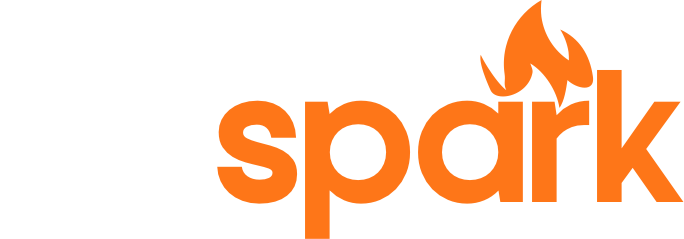Surprising fact: Bitcoin topped $100,000 in 2024–2025 as massive ETF flows from firms like BlackRock and Fidelity reshaped the market.
You came here to compare options, and this guide puts the main details in one place so you can weigh fees, safety, and usability before you act.
We’ll walk you through leading names — Coinbase, Kraken, Gemini, OKX, Bybit, Bitstamp, Crypto.com, and others — and show which platforms suit beginners, active traders, and U.S. investors.
Expect clear, data-backed research on fee tiers, spreads, funding costs, staking trade-offs, and custody signals so you’re not surprised by hidden risks.
Quick preview: learn where to find low maker/taker fees, which firms offer strong regulatory footprints, and how liquidity and order types match your trading style.
Key Takeaways
- Compare fees and features side-by-side to match a platform to your goals.
- Look for licensure, custody practices, and insurance disclosures as safety signals.
- Beginners benefit from simplicity; pros need advanced order tools and deep liquidity.
- Watch funding and withdrawal costs—these add up faster than spreads.
- Use this roundup for quick comparisons and deeper research before you deposit funds.
Catch the 2025 wave: Best Crypto Exchanges and the smarter way to trade crypto now
Bigger volumes and tighter spreads in 2025 put execution quality and fee structure front and center for every trader.
Institutional flows — including over $100B into spot Bitcoin ETFs — helped push bitcoin above $100,000 and lifted market cap across many tokens. That means deeper liquidity on major pairs, but your net result still depends on fees and platform choice.
Pick a venue that matches your plan. If you want simple on-ramps, choose platforms with clear UX and quick fiat rails. If you trade actively, hunt tiers that unlock low maker/taker pricing and deep order books.
- Higher users and daily volume generally mean faster fills and better price discovery.
- Check altcoins, withdrawal rules, and reporting tools before you fund an account.
- Staking or lending? Compare the yield terms and any lockup restrictions beside trading fees.
| Platform | Registered users | Avg daily spot volume | Quick note |
|---|---|---|---|
| Binance | 245M | ~$14B | Top liquidity; global coverage |
| Bybit | — | ~$8.2B | Low-cost trading tiers |
| Coinbase | — | ~$5.3B | Strong U.S. scale and compliance |
SEO meta description for this Product Roundup
When shoppers search for where to buy or sell digital assets, a clear meta description that stresses fees, features, and U.S. access wins attention.
Meta description (use in page head): Discover the best crypto exchanges for trading cryptocurrency in 2025 with up-to-date fees, platform features, safety checks, and U.S. availability. This data-backed, expert-reviewed guide helps you buy, sell, and trade digital assets with clear fee comparisons and easy app recommendations.
Use this snippet to boost CTR for readers comparing platforms in 2025. It highlights what matters most: up-to-date fees, regulatory signals, and whether a platform supports U.S. users.
The description is action-focused to attract buyers and traders. It also signals broad coverage of digital assets beyond bitcoin and Ethereum.
| Element | Why it helps | Example phrase |
|---|---|---|
| Fees | Shows true cost and encourages click-through | “up-to-date fees” |
| Safety | Builds trust for U.S. users and investors | “safety checks” |
| Action verbs | Matches commercial intent and search behavior | “buy, sell, and trade” |
How we evaluate the Best Crypto Exchanges: fees, safety, and real-world usability
We test platforms the way you trade: focusing on real costs, safety, and day-to-day usability.
Our goal is to show what you’ll actually pay and which safeguards matter when markets move. Below we break the assessment into clear areas so you can scan fast and decide.
Fee structure and true trading costs
Full-cost view: we compare posted maker/taker rates to average spreads and funding charges. For example, Kraken’s maker/taker tiers run from 0.00%/0.08% to 0.25%/0.40% depending on volume. OKX posts ~10bp fees with ~21bp average spreads among regulated entities. Fidelity uses spread-based pricing near 1% per trade, and CoinGecko measured Crypto.com spreads around 52bp.
Security, regulation, insurance, and custody safeguards
We verify licenses, custody partners, and insurance disclosures. Remember: most crypto holdings lack SIPC coverage. For futures, CME Group remains a top-rated access point through regulated brokers.
Asset selection, liquidity, tools, education, and customer support
We judge asset breadth, staking rules, and derivative access. Liquidity checks include book depth and fill quality. Platform usability covers charting, order types, mobile stability, and tax tools. We also test support SLAs and response paths for account issues.
“We analyze provider documentation and hands-on data to keep the methodology consistent and fair.”
| Criterion | What we check | Example data |
|---|---|---|
| Costs | Maker/taker, spreads, funding, withdrawals | Kraken: 0.00%/0.08%–0.25%/0.40%; OKX: ~10bp fees |
| Safety | Licenses, custody, insurance, incident history | CME for regulated futures; most spot lacks SIPC |
| Usability | Order types, mobile, charts, tax tools | Fill quality, routing, UX speed |
Short takeaway: we blend provider docs, market data, and hands-on checks so you see true fees, risks, and practical pros and cons before you sign up.
Best Crypto Exchanges for low fees in 2025

If you want to shave trading costs, focus on venues where posted fees and real spreads both move in your favor.
Kraken and Kraken Pro
What you get: predictable maker/taker pricing and a low entry point.
Kraken posts maker fees from 0.00% to 0.25% and taker fees from 0.08% to 0.40%, based on 30-day volume. A $10 minimum deposit makes it easy to start.
Kraken Pro offers the same fee grid while adding advanced order types and pro-grade charts, which helps active traders keep costs down without sacrificing tools.
OKX
OKX competes on both posted fee rates (around ~10bp) and tight execution. Among regulated venues we sampled, average spreads ran near ~21bp, which lowers total costs for moderate-size trades.
Bybit
Bybit often wins on sticker-price fee and liquidity. Its high volumes reduce slippage, and a push for licenses in the Netherlands, Turkey, and Canada signals stronger regional access.
- Check your expected monthly volume to see where you land on maker/taker tiers.
- Compare spreads for the pairs you trade—low posted fees can be offset by wide spreads.
- Factor in wire, network, and withdrawal costs before moving funds frequently.
| Platform | Maker / Taker | Quick note |
|---|---|---|
| Kraken | 0.00% – 0.25% / 0.08% – 0.40% | $10 minimum; Kraken Pro same fees |
| OKX | ~10bp / competitive taker | Tight avg spread ≈ 21bp |
| Bybit | Low headline fees; volume tiers | Expanding licensing; high liquidity |
“Compare posted fees and real execution costs side-by-side—both matter to your net return.”
Best Crypto Exchanges for beginners who want simplicity and support
Starting with a simple, trusted platform can make your first trades stress-free and fast.
Coinbase makes account setup, funding, and your first trades straightforward. You can fund with a low minimum and enjoy quick crypto withdrawals when you need to move funds.
The trade-off is pricing: Coinbase’s fees can be higher and less transparent. If you plan only small, occasional buys, that may be fine. For larger or frequent trading, watch execution costs closely.
Gemini
Gemini stands out for availability — it operates in every U.S. state — and for a clean, beginner-friendly app. Customers appreciate clear verification and simple buy/sell flows.
Expect higher fees on the basic interface. If pricing matters, use Gemini’s ActiveTrader for 100+ pairs and a fee schedule built for volume traders.
Uphold
Uphold offers many assets, thousands of pairs, multiple wallet choices, and staking options. That breadth helps curious users explore beyond main coins.
Note the higher transaction fees and limited live phone support; plan for slower ticket responses during onboarding or a deposit issue.
- If you want a clean start, Coinbase is easiest for setup and quick withdrawals.
- Gemini is best for U.S. coverage and a clear interface; switch to ActiveTrader for better pricing on larger trades.
- Uphold gives broad asset choice and staking, but budget for higher transaction costs and non-phone support.
- Always test with a small amount to learn deposit, trade, and withdrawal flows before moving larger balances.
“Compare the app and desktop experience for each service — the interface you like most will shape how you trade.”
| Platform | Key beginner benefit | Main trade-off |
|---|---|---|
| Coinbase | Low minimum; quick withdrawals | Higher, less transparent fees |
| Gemini | Available in all U.S. states; easy UX | Higher simple-interface fees; ActiveTrader for better rates |
| Uphold | Wide assets; staking & wallets | Higher transaction fees; limited phone support |
Advanced trading, charts, and derivatives access on crypto exchanges

Active traders need platforms that combine low latency, deep order books, and flexible order types.
Kraken Pro: pro-grade tools without higher fees
Kraken Pro lets you trade with advanced order types, robust charts, and screeners while keeping the same fee schedule as standard Kraken.
This makes it ideal if you run frequent strategies and want pro tools without switching platforms.
Deribit: options liquidity for volatility plays
Deribit dominates offshore options markets, with deep bitcoin and ether books that support complex structures and hedges.
Its scale—billions in open interest and rising volume—helps you place large, nuanced positions with lower slippage.
CME access via traditional brokers for regulated futures
If you prefer regulated markets, access Micro Bitcoin and Micro Ether futures and options through Schwab or Fidelity.
This route gives you familiar custody and clearer legal protections while still enabling professional hedging.
“Confirm how each exchange handles liquidations, funding, and margin before you size a leveraged position.”
| Service | Strength | Why it matters |
|---|---|---|
| Kraken Pro | Advanced orders & charts | Pro tools at standard fees |
| Deribit | Options depth | Low slippage for complex trades |
| CME via brokers | Regulated futures | Broker custody and oversight |
U.S.-friendly access: crypto exchanges and brokers most Americans can use
If you need reliable U.S. access, choose platforms with clear state coverage, transparent fees, and native withdrawal options. That helps you avoid surprise limits and makes self-custody possible when you want it.
Coinbase and Gemini: strong U.S. presence, transparency, and scale
Coinbase is the largest U.S.-based exchange and offers wide availability, easy onboarding, and public reporting that helps users trust disclosures.
Gemini serves all 50 states and focuses on compliance and clear fee statements, which speeds verification for new accounts.
Fidelity, Interactive Brokers, and Robinhood: brokers offering crypto access
Fidelity Crypto supports BTC, ETH, and LTC with about a ~1% spread and added send/receive in 2025. That makes it a solid option if you want brokerage integration plus basic crypto moves.
Interactive Brokers lists BTC, ETH, LTC, and BCH and caps crypto fees near 1% for fiat pairs. Robinhood gives commission-free access to fewer coins and does not allow crypto-to-crypto trading or broad withdrawals.
- Check state availability—Kraken, for example, restricts NY, WA, and ME and limits some services by state.
- Confirm native withdrawals if you plan to self-custody; not all providers allow it.
“If you value transparency, public-company reporting and broker oversight add comfort even when fees run higher.”
Most Read:- MARA Boosts Monthly Bitcoin Output by 5% in September
Altcoin hunters: crypto exchanges with broad coin coverage and trading pairs

If you hunt altcoins, pick venues that mix wide listings with real liquidity so your orders fill at fair prices.
Breadth matters, but execution matters more. Crypto.com lists a massive roster of coins and offers straightforward staking on many assets. Expect easier staking UX, but budget for wider spreads—CoinGecko shows ~52bp on average—and higher withdrawal fees on some networks.
Binance global
Liquidity and pairs: Binance claims 245M users and about $14B daily spot volume, making it the deepest market outside the U.S. Their compliance pivot aims to tighten controls while keeping huge pair depth for altcoin flows.
Bitstamp and OKX
Conservative vs. competitive: Bitstamp stands out for audits and transparency, offering enough coins to diversify without exotic risk. OKX combines broad listings with ~10bp posted fees and ~21bp spreads, and it holds $15B+ in BTC/ETH liquidity—good for cost-aware altcoin strategies.
“Always verify regional availability and minimum withdrawals before you fund an account.”
- Confirm whether specific coins are supported where you live.
- Check minimum withdrawals and network fees to avoid surprises.
- Watch order book depth during new listings—liquidity shifts fast.
Fees, spreads, and the real price you pay to trade on crypto exchanges
When you trade, the posted fee is only part of the bill — spreads, network charges, and withdrawal rules fill the rest.
Understanding maker/taker tiers and volume discounts
Maker/taker schedules change with monthly volume. A small fee gap at low volume can turn into a big difference when you scale. Keep an eye on tier thresholds so you know when a fee drop kicks in.
Why spreads matter as much as fees
Spreads are the unseen cost on every market order. OKX shows ~10bp posted fees but ~21bp average spreads, which raises the all-in price. Fidelity’s spread-based model (~1%) and Crypto.com’s wider ~52bp spreads illustrate how execution beats a low headline fee.
Funding, withdrawal, and network costs
Bank wires, card charges, and blockchain gas add to each transaction. Minimum withdrawals and special networks can trap small balances. Factor these into your expected transaction cadence if you plan frequent buy sell moves.
Staking rewards versus opportunity cost
Staking yields look attractive until you count lockups and unbonding times. Those windows can prevent you from reacting during volatility. Weigh expected rewards against the trading price you might miss while funds are locked.
“Simulate your order size across venues using book snapshots and spreads to estimate all-in costs before you execute.”
| Cost type | Example | Takeaway |
|---|---|---|
| Maker / Taker | Kraken: 0.00% / 0.08% (scales with volume) | Volume discounts lower per-fill cost |
| Spreads | OKX: ~21bp avg spread; Fidelity: ~1% model | Tight spreads can beat lower posted fees |
| Funding & Withdrawals | Wire fees, card fees, network gas vary | Include these in frequent buy/sell plans |
| Staking | Rewards vs lockup/unbonding | Account for missed trading opportunities |
Security first: custody, insurance disclosures, and exchange reputation

Security should be the first filter when you decide where to hold or trade assets.
Look for clear custody models, independent audits, and public incident reporting before you fund an account.
Regulation highlights from Coinbase, Bitstamp, Fidelity, and CME
Coinbase is publicly traded with large custody operations and routine disclosures that help users check risks.
Bitstamp has a track record of audits and transparency that supports trust in how assets are held.
Fidelity offers brokerage-style crypto access under regulated frameworks and uses spread-based pricing near ~1%.
CME Group is regulated by the CFTC and is a top choice when you need regulated futures access and stronger legal protections.
Risk notes: exchange availability by state, staking and service limits
There’s no SIPC safety net for cryptocurrency, so read any insurance wording closely to learn what is covered and what is excluded.
Some platforms restrict services by state. For example, Kraken limits accounts in NY, WA, and ME and may pause staking or certain funding methods.
Operational resilience matters: favor providers that disclose cold storage ratios, key management practices, and penetration testing.
“Prefer venues with independent audits, public reporting, and clear custody terms before you store meaningful balances.”
| Provider | Regulatory signal | Key protection |
|---|---|---|
| Coinbase | Public company; U.S. licensure | Large custody ops; partial insurance |
| Bitstamp | EU & global oversight | Independent audits; clear reporting |
| Fidelity | Broker-regulated access | Broker custody; spread-based pricing |
| CME (via brokers) | CFTC-regulated | Cleared futures; stronger legal protections |
If you self-custody, practice good hygiene: hardware wallets, strong 2FA, and phishing awareness to reduce account takeover risk.
How to choose the Best Crypto Exchanges for your goals
Start with a clear plan: your trading style should guide which platform you pick. That choice narrows the features, fees, and support you need.
Match platform features to your strategy: buy/sell, active trading, or staking
If you primarily buy sell core coins, choose a simple interface with fast funding and clear fees. A basic crypto exchange or broker can save time and reduce friction.
Active traders should look for low all-in costs, advanced order types, and strong uptime. Confirm whether pro tiers or modes share the same pricing as standard accounts.
If staking matters, compare yields, lockup windows, and regional eligibility so you do not plan around options you cannot access.
Storage decisions: leave assets on the exchange or use your own wallet
Decide where to store assets based on how often you move them. Keeping funds on an exchange is convenient for frequent trades.
Self-custody gives you control for long-term holdings but adds responsibility for keys and backups. Brokers like Fidelity or Interactive Brokers can simplify tax and portfolio reporting, though they may limit coin options.
“Build a short list, test accounts, and only move larger balances after you confirm UX, KYC speed, and support responsiveness.”
| Goal | Suggested choice | Key trade-off |
|---|---|---|
| Occasional buy/sell | Simple exchange or broker | Easy UX; slightly higher spreads |
| Active trading | Pro-grade crypto exchange | Lower fees; steeper learning curve |
| Staking / long hold | Exchange staking or self-custody | Yields vs lockup and control |
Make a short list and open test accounts. Try funding, small trades, and withdrawals. Revisit your choice quarterly — fees, listings, and services change fast in crypto.


